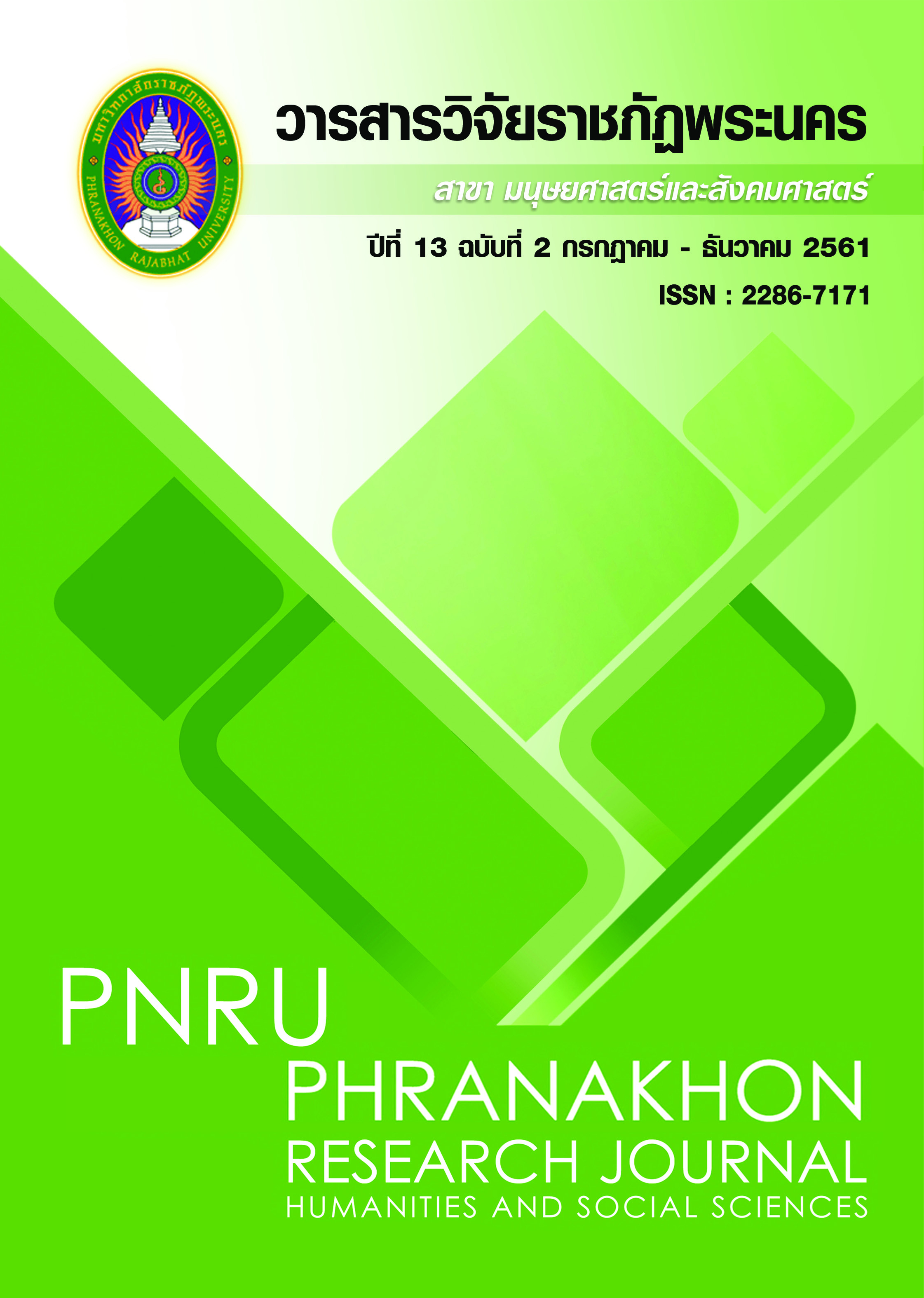แนวทางในการสร้างสรรค์บรรยากาศในชั้นเรียนเชิงบวกในศตวรรษที่ 21 สำหรับครูมืออาชีพ
Main Article Content
บทคัดย่อ
การเรียนรู้ในศตวรรษที่ 21 มุ่งเน้นทักษะที่จำเป็นสำหรับพัฒนาผู้เรียน ซึ่งการเรียนรู้ในชั้นเรียนอย่างมีประสิทธิภาพไม่สามารถเกิดขึ้นได้ จนกว่าครูผู้สอนจะสามารถพัฒนาและลงมือจัดระเบียบวินัยได้อย่างเป็นระบบ โดยการสร้างสรรค์บรรยากาศในชั้นเรียนเชิงบวกด้วยความเอาใจใส่ เป็นการทำให้ผู้เรียนมีส่วนร่วมในการเรียนรู้ทางวิชาการ และเสริมสร้างพัฒนาการด้านจิตพิสัย คือ การรู้จักที่จะเข้าใจผู้อื่น และสามารถอยู่ร่วมกันในสังคมของเพื่อนร่วมชั้นได้ โดยอาศัยแนวคิดการจัดการชั้นเรียนในการป้องกันปัญหา สนับสนุนสิ่งดี ๆ ให้เกิดขึ้น และแก้ไขพฤติกรรมที่ไม่เหมาะสม จากการที่ครูผู้สอนใช้แนวทางในการสร้างสรรค์บรรยากาศในชั้นเรียนเชิงบวก ด้วยใช้วิธีการต่าง ๆ อย่างเอาใจใส่ ได้แก่ 1) จัดสภาพแวดล้อมที่สนับสนุน เพื่อให้ผู้เรียนสร้างหรือผลิตผลงานขึ้นมาจากกระบวนการกลุ่ม และได้รับการชี้แนะให้รู้จักช่วยเหลือกัน 2) ให้ผู้เรียนมีส่วนร่วมในการเรียนมากขึ้น ใช้วิธีการเรียนรู้แบบร่วมมือ 3) ใช้สื่อเทคโนโลยีและสารสนเทศเป็นฐาน และนำมาใช้ให้เกิดประโยชน์ด้วยรู้จักการแบ่งปัน 4) ใช้การสื่อสารให้มากขึ้น ให้มีการแลกเปลี่ยนความคิดเห็นและฟังโดยใช้ความเอาใจใส่ 5) เปิดโอกาสให้ผู้เรียนได้ทำความเข้าใจผู้อื่น ให้ความสนใจพฤติกรรมทุก ๆ พฤติกรรม โดยใช้การสังเกตและเลือกใช้วิธีการจัดการที่เหมาะสม 6) ฝึกตนเองให้รู้จักรับฟังและเป็นผู้ฟังที่ดี เพื่อให้มีการสื่อสารอย่างเข้าใจ และ 7) ทำความรู้จักผู้เรียนรายบุคคล เพื่อนำมาใช้ในการวางแผนการจัดการเรียนรู้ที่สอดคล้องกับผู้เรียนมากที่สุด และช่วยเหลือด้านการปรับพฤติกรรมให้เหมาะสม
Article Details
บทความที่ได้รับการตีพิมพ์เป็นลิขสิทธิ์ของมหาวิทยาลัยราชภัฏพระนคร
ข้อความที่ปรากฏในบทความแต่ละเรื่องในวารสารวิจัยราชภัฏพระนครเล่มนี้เป็นความคิดเห็นส่วนตัวของผู้เขียนแต่ละท่านไม่เกี่ยวข้องกับมหาวิทยาลัยราชภัฏพระนคร และคณาจารย์ท่านอื่นๆในมหาวิทยาลัยฯ แต่อย่างใด ความรับผิดชอบองค์ประกอบทั้งหมดของบทความแต่ละเรื่องเป็นของผู้เขียนแต่ละท่าน หากมีความผิดพลาดใดๆ ผู้เขียนแต่ละท่านจะรับผิดชอบบทความของตนเองแต่ผู้เดียว
เอกสารอ้างอิง
Gabriel, E. & Matthews, L. (2011). “Choice theory: an effective approach to classroom discipline and management.” The Journal of Adventist Education. February-March,20-23. Retrieved 9 September 2017, from https://circle.adventist.org/files/jae/en/jae201173032003.pdf
Giulio, R. C. (2006). Positive classrooms with Dr. Bob. Retrieved June 15, 2013, from https://www.digiulio.com/ClassMgt/#_The_Matrix
Kounin, J. (1977). The Kounin model of wittiness & organization. Retrieved June 15, 2013, from https://olameegdcequared.blogspot.com/2013/01/group-management-kounin.html
Kratochwill, T.R. (2017). Classroom management -teachers modules. American Psychological Association. Retrieved 9 September 2017, from https://www.apa.org/education/k12/classroom-mgmt.aspx
Partnership for 21st Century Learning (P21). (2015). Framework for 21st Century learning. Retrieved 9 September 2017, from https://www.p21.org/our-work/p21-framework.
Powell, S.D. (2010). Wayside teaching: connecting with students to support learning. CA: Corwin.
Sequeira, C. (2007). “Choice theory in the classroom.” Journal of Adventist Education. February-March Retrieved 9 September, 2017, from https://circle.adventist.org/files/jae/en/jae200769033507.pdf
Sottipolanun, S. (2015). Developing capability in designing classroom management by using the research-based project for third-year students of Bachelor of Education program, College of Teacher Education. Phranakhon Rajabhat University. Journal of Chandrakasemsarn. 21(41), 77- 86. (in Thai).


